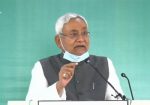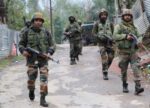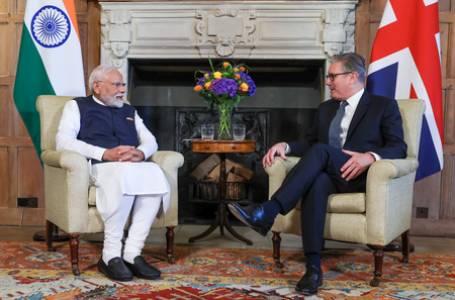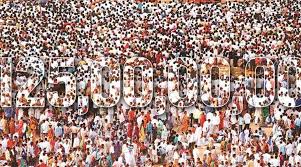
Photo: Courtesy Indian Express
New Delhi: The just released National Family Health Survey (NFHS) 2020-21 has again broken the oft propagated myth by the Hindu Right-Wing ideologues that Muslim population is increasing manifolds than those of Hindus and will overtake it in the next 50 odd years.
The NFH Survey, thankfully overseen by the international agencies, gives out some startling facts to prove that if a population is allowed to live peacefully and tended carefully, its demographic indicators can become a role model. The factors lie not in monolithic communities or religions but in overall reasons that impact the whole population of that area, the chief among them being overall literacy, education and, perhaps, affirmative action of good governance and peace by the administration.
The NFHS data of the island union territory of Lakshadweep, sort of a cocoon in Indian the ocean consisting of nearly 97 per cent Muslim population, can make any other Indian state or union territory learn from the examples set by it.
Sample the following:
In the NFHS 2020-21, Lakshadweep has recorded a total fertility rate of 1.4 children per woman as against Bihar’s TFR of 3.0 children and Uttar Pradesh’s TFR of 2.4 children. The national TFR stands at 2.0 children per woman. As against Lakshadweep, the Muslims are only 16.87 per cent of Bihar population and 19.26 per cent in Uttar Pradesh. Even Gujarat, which is considered among the most developed states and has only 9.67 per cent Muslims has a TFR of 1.9 percent. Similarly, Rajasthan having 9.07 and Haryana having 7.03 per cent Muslim population have a TFR of 2.0 and 1.9 as against Assam and West Bengal that have sizeable Muslim population of 34.22 and 27.1 per cent but have a TFR of only 1.9 and 1.6 respectively. Thus, the data debunks the assumption that the population in states having sizeable Muslim population is growing phenomenally.
The other parameters of Lakshadweep are equally brilliant. It has an infant mortality rate of zero per 1000 live births, only 1.9 percent females got married below the age of 18 years, the female literacy in the age group of 15 to 49 years stands at 95.3 per cent, a whopping 68.2 per cent of women have received 10 years or more schooling. And to top it all, the sex ratio stands at 1051 female children born per 1000 male children during the last five years.
In comparison, these parameters get skewed in big states like Uttar Pradesh, Bihar and Gujarat that have infant mortality of 50.4, 46.8 and 31.2; female literacy of 66.1, 55 and 73.5 per cent respectively and a sex ratio of 941, 908 and 955 female children born per 1000 male children during past 5 years.
Ironically, the states having overwhelming Hindu majority population pale even against states having sizeable Muslim population in many such indicators. For example, Assam and West Bengal that have sizeable Muslim population of 34.22 and 27.1 per cent but have a TFR of only 1.9 and 1.6 respectively. Their sex ratio of female children born per 1000 male children during past 5 years is also much healthier at 964 and 973. Their female literacy levels at 75.1 and 72.9 per cent are far better than Uttar Pradesh, Bihar, Rajasthan, and Madhya Pradesh.
A cursory study and comparison of the data shows that growth or decline of population depends on the prevailing demographic circumstances of an area and all communities are impacted by those.
The NFHS 2020-21 data reinforces the findings and extrapolation of population data of scholars like Prof. R B Bhagat, Head Department of Migration and Urban Studies International Institute for Population Sciences, Mumbai.
In his seminal research paper “Transition in Hindu and Muslim Population Growth Rates: Myth and Reality” Prof Bhagat said that “In spite of India achieving the replacement level of fertility very soon, the population growth will continue for several decades due to demographic momentum triggered by young population and almost universal marriage practices. The population of India will stabilize at the end of 21st century with Hindus constituting 1270 million and Muslims 320 million population. The total population of the country will stabilize at about 1.7 billion.”
Debunking the myth of substantial increase in the Muslim population, Prof. Bhagat further said, “Thus, the percentage of Muslim population in India which was 14 per cent in 2011 would rise to about 18 per cent at the end of the 21st century as a result of time lag in demographic transition among Muslim community. So, while some rise in the share of Muslim population in the country is inevitable, it is no way going to outnumber Hindus as generally misconceived and conjectured in certain political circles.”
The fresh NFHS 2020-21 data not only reinforces his findings but, perhaps, also reduces the time lag besides busting the ‘exploding’ Muslim population myth a step further. The findings and recommendations of the Sachar Committee provide even better answers. The committee’s report explains that the demographic condition is not independent of socio-economic and political conditions. The feeling of insecurity that gets reinforced because of frequent Hindu-Muslim riots not only impact communal polarization but also on the reproductive behaviour, and access to and the use of reproductive health services including family planning.
Building on these findings, Prof. Bhagat says that “the time lag in demographic transition among Muslims reflects the impact of the combination of interacting factors which are both socioeconomic and political rooted in the minority status of the community. However, Muslims are not very different from those who are poor and less educated but their response to such problems is likely to be influenced by the issues they face vis-à-vis identity, security and inclusiveness.”
Hope, the government listens to the message that NFHS data is sending loud and clear.
–INDIA NEWS STREAM



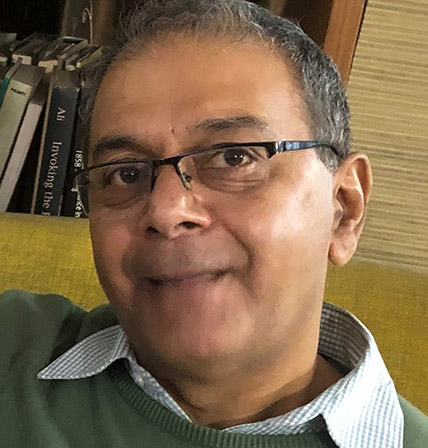 by Manan Kumar
by Manan Kumar







